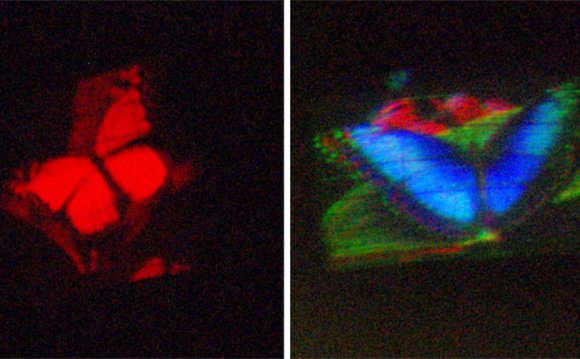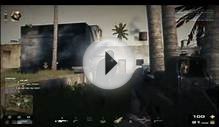
The collection contains works representing the artistic and technical evolution of the medium, created by some of the world's foremost holographers.
To learn more about our collection:
"Holography" denotes the techniques and tools of capturing and "replaying" the three-dimensional light information that reflects from illuminated objects. In the making of a hologram, one laser beam is split into two – the reference beam and the object beam – and both meet on the holographic film where an interference pattern is recorded. Projecting laser light, or ordinary white light (depending on the type of hologram), back through the film "structures" the light in just the way it originally reflected from the object. The eye sees the original subject in three dimensions even though the material object is no longer present.
Today the MIT Museum has the largest and most comprehensive collection of holograms in the world. Historic holograms in the collection include the first reflection holograms, the first laser transmission hologram, and the first white light transmission hologram, created by MIT Professor Stephen Benton, a pioneer in the field of holography and 3-D imaging.
Technical applications are represented by holograms used in medicine, engineering, architecture, and retailing. A holographic architectural model shows how an architect can realize a space in three-dimensions before a project is built. A holographic image made of the remains of the 2000-year-old Lindow Man, discovered in a bog in England, demonstrates the use of holography for anthropological, educational, and archival purposes.
The full range of artistic possibility is apparent in the works of such internationally-recognized holographers as Margaret Benyon, Rudie Berkhout, Harriet Casdin-Silver, Melissa Crenshaw, Setsuko Ishii, John Kaufman, Sam Moree, and Dan Schweitzer.
In addition to holograms, the collection includes the archives of New York's Museum of Holography (MOH). The archives document the administration, collections, artists, exhibitions, educational and artist-in-residency programs of the institution, while extensive subject files contain news clippings and publications of technical and popular developments in holography.
The collection also contains photographs, slides, films, videotapes, audiotapes, and a research library of holography-related publications such as holosphere, the Museum of Holography's journal documenting the application, manufacture, design, development, research, and appreciation of holographic systems, devices, components, and accessories. The MIT Museum continues to build on the collections acquired from the Museum of Holography in 1993.
The archives of the Museum of Holography are open to researchers in accordance with the policy outlined in MIT Museum's collections manual. Owing to the technical requirements of displaying holograms, those not currently on exhibit are not available for viewing.
RELATED VIDEO











